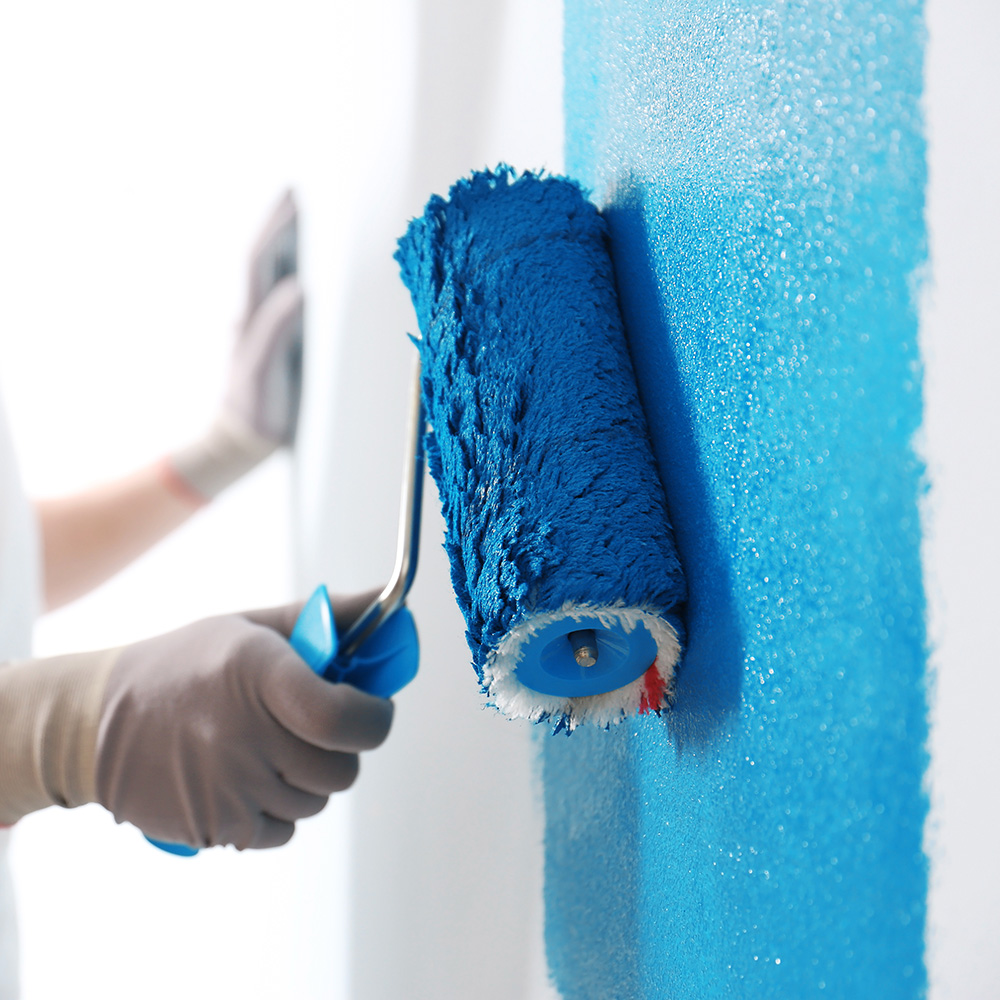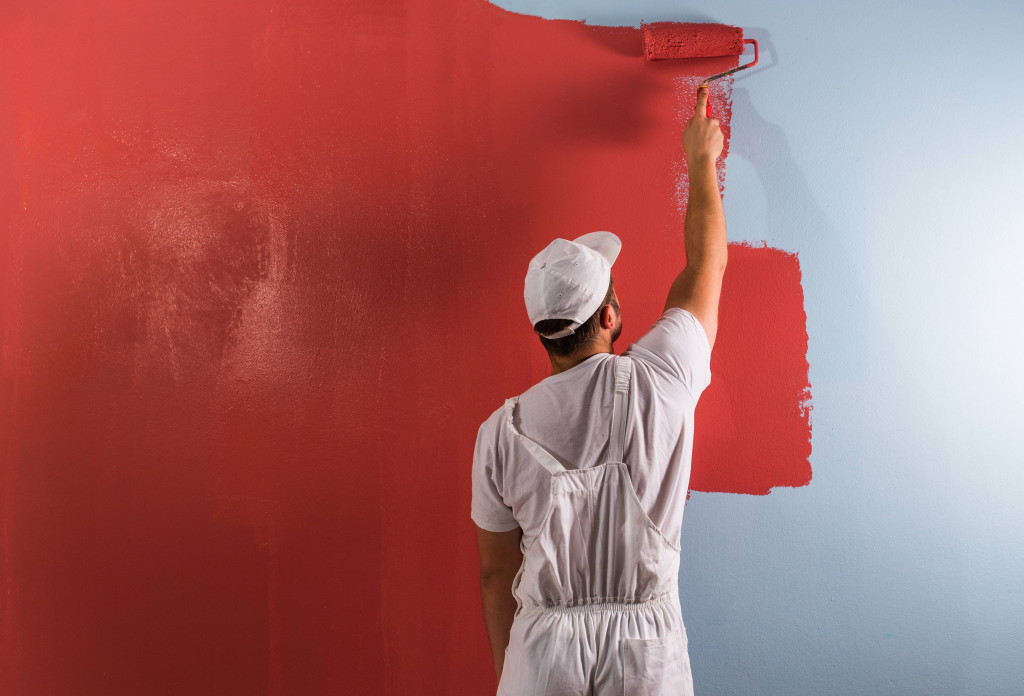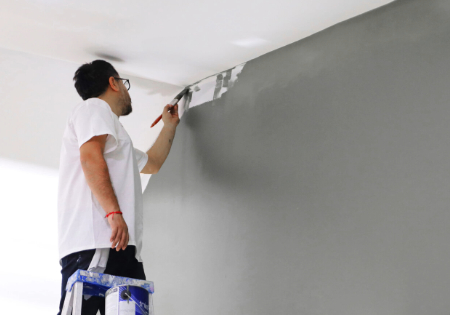Keep Ahead With New Paint Trends: Mixing Strategies for Modern Interiors

The Surge of Color Gradients in Inside Style
As designers significantly look for ingenious means to improve rooms, the increase of color slopes in indoor layout has gathered considerable focus. This method, identified by the smooth shift in between 2 or even more shades, enables a dynamic visual impact that can transform a normal room into a dynamic setting. Color gradients can stimulate emotions, affect understandings of space, and produce focal factors, making them a versatile choice for numerous design styles.
The application of gradients prolongs past wall surfaces; they can be effectively employed in furniture, textiles, and accessories. Developers typically explore differing tones to achieve deepness and intrigue, interesting a series of looks from minimalist to eclectic. Additionally, the versatility of slopes allows their use in both domestic and industrial setups, dealing with varied clientele. As trends progress, the usage of color gradients represents a change towards even more customized and expressive interior spaces, showing individual preferences and way of lives.
Welcoming Ombre Techniques for a Dynamic Look
Ombre techniques have actually arised as an enchanting option for those seeking to include deepness and activity to contemporary insides. This gradient result changes smoothly from one color to an additional, producing an aesthetically striking centerpiece in any type of room. Designers value ombre for its flexibility; it can be used to wall surfaces, furnishings, or also ornamental accents, permitting special expressions of design.
The technique functions particularly well with soft colors, giving a serene setting, while vibrant shades can stimulate an area. Home owners can experiment with numerous color schemes, choosing contrasting shades for a dramatic influence or unified tones for a subtle effect. The application of ombre is not limited to a single wall; it can extend throughout an area, improving the understanding of room and light.
As a contemporary fad, ombre techniques cater to diverse tastes, permitting individuals to customize their insides and welcome creativity in their style technique. paint shops in corpus christi.
Textured Wall Surfaces: Layering Paint for Depth and Interest
Distinctive walls can considerably boost the aesthetic charm of modern-day interiors by including deepness and interest. Strategies for producing texture, thoughtful color mixes, and the right tools for layering are necessary components in achieving this result. Discovering these elements allows for a dynamic and individualized method to interior decoration.
Strategies for Appearance Development
Developing visual passion in interior rooms often rests on the artful application of structure. Different methods can be utilized to accomplish this, such as sponging, cloth rolling, and stippling. Sponging involves utilizing a damp sponge to use a 2nd shade over a base layer, creating a soft, multicolor impact. Rag rolling, on the various other hand, makes use of a rolled rag to use paint, leading to a more dynamic texture. Stippling utilizes a stiff brush or tool to swab paint onto the surface area, developing an one-of-a-kind pattern. Additionally, layering various surfaces, such as matte and glossy, can improve depth. These strategies not just provide aesthetic charm however also contribute to the total setting of contemporary interiors, encouraging a responsive experience.
Shade Combinations for Effect
Layering paint not only boosts appearance yet likewise opens up a globe of color combinations that can dramatically influence the state of mind of a room. By mixing complementary tones, designers can produce a harmonious impact that invites warmth or coolness, depending upon the wanted ambience. Abundant planet tones matched with soft pastels can stimulate a serene atmosphere, while vibrant, contrasting colors can include vibrancy and power. Furthermore, including metallic or shiny finishes within the layers can introduce a vibrant visual aspect, capturing light and boosting the deepness of the color design. Eventually, thoughtful color combinations with layering paint give an opportunity to share specific style while changing common walls into captivating centerpieces.
Tools for Layering Effect
Numerous tools are essential for accomplishing a successful layering impact in paint applications, which can transform wall surfaces into enchanting visual experiences. Brushes and rollers are essential, with diverse sizes enabling different textures and coatings. Specialty tools like sponges and rags can develop distinct patterns and deepness, while scheme blades use accuracy for even more specified lines. For larger areas, making use of a stippling brush can add a detailed surface. In addition, spray guns can efficiently use numerous layers for a smooth, even layer. Painters must additionally consider painter's tape to create tidy edges in between layers. By using the right tools, one can efficiently enhance the visual charm of interiors, making each wall surface an appealing prime focus.

The Power of Shade Obstructing in Modern Spaces
As modern-day interior decoration continues to advance, shade obstructing arises as an effective technique that can transform spaces with strong visual influence. This method entails the tactical positioning of contrasting shades to produce defined zones within a room, boosting both the visual appeal and performance of the area. paint shops in corpus christi. By utilizing big swathes of color, designers can guide the eye and highlight architectural aspects, resulting in a vibrant environment
Color stopping is not limited to wall surfaces; it can additionally be applied to furnishings and style, permitting countless modification. Coupling a vivid color with a neutral tone can develop a striking focal factor while maintaining equilibrium. This technique urges creativity, making it possible for property owners to share their individualities via special shade mixes. Ultimately, shade obstructing functions as a reliable way to revive modern-day insides, making areas feel fresh, energised, and visually appealing.
Integrating Metallics for a Glamorous Complete
Just how can metallics raise the refinement of contemporary insides? Metal coatings serve as a striking focal point, including deepness and aesthetic interest to spaces. They can transform a common room right into a sophisticated resort with the subtle interplay of light and representation. Designers typically suggest including metallics in accent walls, ceilings, or furniture to create a luxurious environment without overwhelming the area.
Numerous metallic shades-- such as bronze, silver, and gold-- supply versatility, enabling home owners to tailor their visual. For example, a soft gold can impart heat, while a sleek silver can offer a modern touch. When coupled with neutral tones, metallics boost the overall style, giving a sophisticated comparison that attracts the eye.
Including metallic paint into trim or moldings can additionally boost building details, creating a polished surface. Ultimately, the critical use of metallics can infuse contemporary insides with prestige and improvement, making them truly captivating.
Innovative Use Stencils for Distinct Patterns
Changing walls with stencils can instill contemporary insides with distinctive character and style. This artistic technique permits developers and house owners to produce personalized patterns that mirror individual aesthetic appeals. Patterns can vary from intricate geometric styles to wayward motifs, enabling a broad selection of expressions. By choosing contrasting shades, stencils can boost a space's aesthetic appeal and work as prime focus without overwhelming the area.
Furthermore, stencils are functional; they can be related to various surfaces, consisting of wall surfaces, furniture, and even ceilings. This versatility makes stenciling a perfect choice for do it yourself enthusiasts seeking to improve their home affordably. Furthermore, the convenience of application and elimination permits for experimentation, allowing people to rejuvenate their decor with very little initiative. Ultimately, imaginative use patterns not just transforms common surface areas yet additionally offers an opportunity for self-expression, making them a trending selection in contemporary interior style.
Mixing Matte and Glossy Coatings for Comparison
The interplay of matte and shiny surfaces can develop a striking visual dynamic in modern insides. Developers commonly use this comparison to enhance building features and define areas. Matte coatings, with their soft, non-reflective quality, can produce a feeling of warmth and intimacy, making them ideal for walls and larger surfaces. On the other hand, glossy finishes show light, including vibrancy and depth, making them suitable for accents such as trim, moldings, or furniture.
The mix of these appearances can lead the eye and emphasize centerpieces within a space. Pairing a matte-painted wall surface with shiny cabinetry can produce a sophisticated equilibrium. Additionally, the careful application of both coatings can evoke numerous moods while improving the general aesthetic. As homeowners progressively look for individualized spaces, blending matte and shiny surfaces provides a versatile technique to achieving contemporary elegance and aesthetic interest in interior decoration.
Frequently Asked Questions
What Devices Are Best for Blending Paint Strategies?
A variety of devices are optimal for blending paint techniques, consisting of foam rollers, brushes with soft bristles, sponge applicators, and airbrushes. Each device gives unique impacts, boosting the mixing process for numerous artistic check here applications.
Just How Can I Fix Mixing Mistakes?
To deal with blending errors, one should lightly sand the affected location, use a primer if essential, and afterwards very carefully reapply paint making use of a soft brush or sponge to attain a smooth change and bring back the wanted effect.
Exist Specific Paint Brands Recommended for Blending?
Numerous paint brands are recommended for mixing, consisting of Benjamin Moore, Sherwin-Williams, and Behr. These brands provide high-grade surfaces and a wide variety of shades that facilitate smooth shifts and reliable blending strategies in numerous interior projects.
Can I Blend Paint Without Professional Aid?
Yes, blending paint without professional aid is possible. With practice and the right tools, individuals can accomplish desirable impacts. Numerous online tutorials and overviews can help in mastering blending techniques for personal tasks.

For How Long Does Blended Paint Last on Wall Surfaces?
Mixed paint can last anywhere from five to 10 years on wall surfaces, depending upon factors such as the high quality of paint made use of, surface area prep work, and ecological problems. Regular upkeep generally boosts long life and look.
As designers increasingly seek ingenious methods to boost rooms, the rise of color gradients in interior design has actually gathered substantial attention. The strategy functions specifically well with soft colors, supplying a tranquil setting, while vibrant colors can energize a space. Strategies for developing appearance, thoughtful color mixes, and the right devices for layering are vital parts in accomplishing this result. Layering paint not only boosts appearance but likewise opens up a world of color mixes that can significantly influence the mood of an area. As contemporary indoor layout continues to evolve, color blocking emerges as a powerful method that can transform areas with strong visual effect.